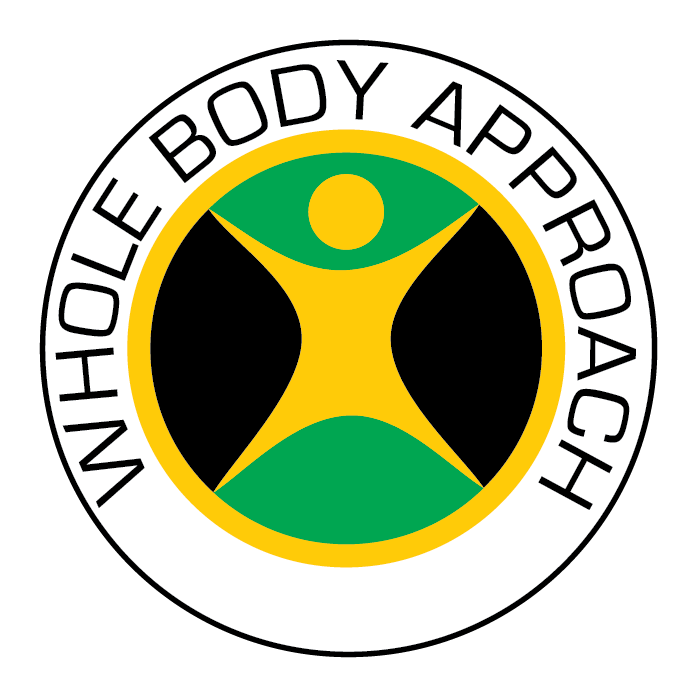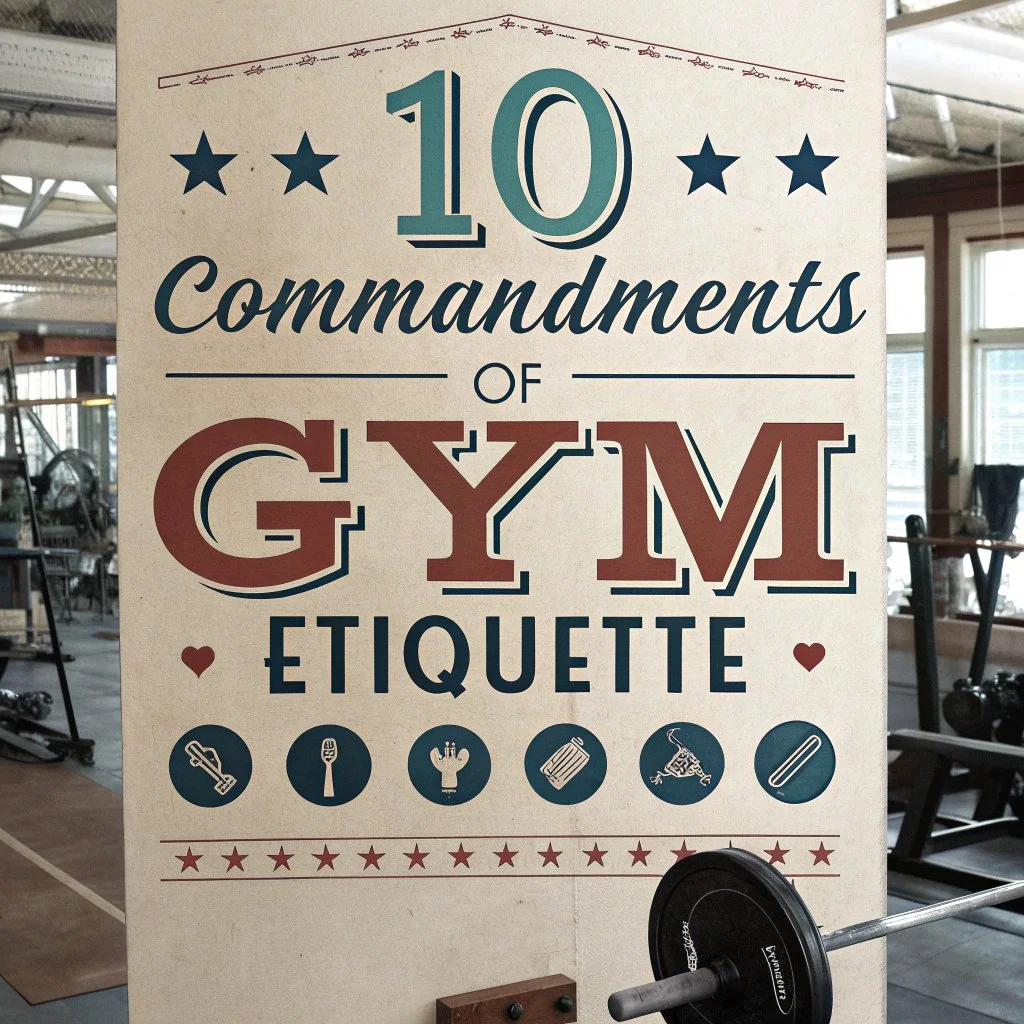10 Unwritten Gym Rules: Essential Etiquette for Every Fitness Enthusiast
As a personal trainer who has spent countless hours in gyms across Chelmsford and beyond, I've witnessed the full spectrum of gym behaviors—both commendable and cringe-worthy. Whether you're a busy parent, squeezing in a workout between school runs, or an active professional, maintaining fitness despite a hectic schedule, understanding proper gym etiquette is essential for creating a positive experience for everyone.
These unwritten rules aren't just about being polite—they're about creating an environment where everyone can achieve their fitness goals efficiently and enjoyably. Let's dive into the ten commandments of the gym that every fitness enthusiast should follow.
Re-Rack Your Weights: The Golden Rule Around the Gym
Nothing disrupts the gym atmosphere more than scattered weights and abandoned equipment. When you finish using dumbbells, barbells, or weight plates, always return them to their designated spots[1][3].
This simple act of consideration:
Prevents potential injuries from weights left on the floor
Saves time for the next person using the equipment
Maintains an organised gym environment
Shows respect for both fellow gym-goers and staff
Remember, the person after you might not be able to lift as much weight as you can. Leaving a loaded barbell or heavy dumbbells out creates an unnecessary obstacle for others[2]. As the saying goes in fitness circles: you were strong enough to pick them up, you're strong enough to put them back where they belong.
Don't Hog the Weights: Share Equipment Mindfully
During peak hours, being mindful about equipment usage becomes particularly important. Avoid monopolising multiple pieces of equipment simultaneously, especially when the gym is busy[7].
When using equipment:
Limit your time on popular machines to about 20 minutes during busy periods[2]
Allow others to work in between your sets when possible[10]
Return dumbbells to the rack between sets if you're not immediately using them
Be aware of how many pieces of equipment you're using at once
If you're doing a circuit or superset workout that requires multiple stations, consider scheduling these sessions during off-peak hours when possible. Remember that everyone at the gym is trying to complete their workout efficiently[7].
Use a Towel: Wipe Equipment After Use
Sweat is a natural part of working out, but leaving your perspiration behind on equipment is one of the quickest ways to become unpopular at the gym[1][2].
Always:
Bring a personal towel to wipe down equipment after use
Use the provided disinfectant spray when available
Clean benches, machine seats, and handles thoroughly
Pay special attention to areas that have direct contact with skin
This practice isn't just about courtesy—it's about hygiene and health. Proper cleaning helps prevent the spread of germs and keeps equipment in better condition for longer[7]. The pandemic taught us valuable lessons about shared spaces and hygiene that we should continue to practice.
Respect Personal Space: Mind Your Position Next to Someone
The gym can get crowded, but that doesn't mean personal boundaries disappear. Be conscious of where you position yourself in relation to others[9].
Good spatial awareness includes:
Using equipment that's not directly adjacent to another person when alternatives are available
Maintaining appropriate distance when performing exercises that require movement
Being aware of your surroundings during exercises that take up more space
Avoiding hovering near someone who's using equipment you want to use next
If the gym is packed and you must use equipment next to someone, acknowledge them with a quick nod and focus on your workout. Everyone appreciates having their personal space respected, especially during intense training sessions. [9]
Headphone Etiquette: The Universal "Do Not Disturb" Sign
When someone is wearing headphones at the gym, they're signaling that they're in their zone and prefer not to be interrupted[3][9]. This is one of the most widely recognised unwritten gym rules.
Respect the headphone boundary by:
Avoid starting conversations with someone wearing headphones
Use non-verbal communication (like a quick wave or gesture) if you need to ask about equipment
Wait until they're between sets if you absolutely must speak with them
Understanding that music or podcasts help many people focus on their workout
If you're the one wearing headphones, a quick removal of one earbud signals to others that you're open to brief communication. This small gesture can make interactions smoother when necessary[10].
The Squat Rack Is for Squats: Specialised Equipment Usage
Certain pieces of equipment in the gym are designed for specific exercises, and using them for alternative movements—especially during busy periods—is considered poor etiquette. [10]
The most notorious example is the "no curling in the squat rack" rule. Squat racks are primarily designed for exercises that require safety catches, such as:
Squats (of course)
Overhead presses
Rack pulls
Bench press (when a proper bench station isn't available)
Using specialised equipment for exercises that could easily be performed elsewhere limits access for those who need that specific equipment for its intended purpose. Be mindful of this, especially during peak hours when equipment availability is limited[10].
Keep the Grunting to a Minimum: Noise Control
While some vocalisation during intense lifting is natural, excessive grunting, shouting, or weight-dropping can be disruptive to others trying to focus on their workouts[9].
Finding the balance:
A moderate grunt during a heavy lift is generally acceptable
Loud shouting or screaming that draws attention is not
Controlled lowering of weights instead of dropping them when possible
Being aware of how your noise level affects the overall gym atmosphere
Many gyms have specific policies regarding excessive noise, particularly with regard to dropping weights. While some powerlifting or CrossFit-focused facilities may be more tolerant of such behaviors, commercial gyms typically expect members to maintain reasonable noise levels [9][3].
Politely Ask Before Interrupting Someone's Set
Timing is everything when it comes to gym communication. Interrupting someone in the middle of a set is not only distracting but also potentially dangerous. [1][3]
The proper approach:
Wait until someone has completed their set before approaching them
Make eye contact and use a friendly gesture to indicate you'd like to speak with them
Keep conversations between sets brief and to the point
If asking to work in, be prepared to adjust weights as needed quickly
Remember that many people are timing their rest periods between sets, so keeping interactions concise allows them to maintain their workout rhythm. If someone is in the middle of an intense set, wait patiently rather than trying to get their attention[3][10].
Gym Equipment Reservation: Keys and Towels
In most gyms, a towel or personal item placed on equipment signals that someone is using it, even if they've stepped away momentarily[3]. This is an unspoken reservation system that most regular gym-goers understand and respect.
The etiquette around "saving" equipment:
A set of keys, water bottle, or towel indicates the equipment is in use
This reservation is generally respected for reasonable periods (usually for water breaks or brief supersets)
Extended absences (more than 5-10 minutes) typically void the reservation
During peak hours, be especially mindful about how long you're "reserving" equipment
Suppose you need to use equipment that appears reserved but has been unoccupied for an extended period. In that case, it's acceptable to politely ask nearby gym-goers if they know who it belongs to before using it[3].
High-Traffic Areas: Exercise Placement Awareness
Certain areas of the gym experience more foot traffic than others. Performing exercises that require significant space in these high-traffic zones can create obstacles and safety hazards for others[10].
Areas to be mindful about:
Main walkways between equipment sections
Space directly in front of the dumbbell rack
Areas near water fountains or gym entrances/exits
Narrow passages between machine sections
When planning exercises that require more space, such as walking lunges, kettlebell swings, or jumping rope, look for open areas away from main traffic patterns. This consideration helps maintain safe movement throughout the gym for everyone[10].
Conclusion: Creating a Positive Gym Community
Following these unwritten gym rules isn't just about avoiding dirty looks from other gym-goers—it's about contributing to a positive fitness community where everyone feels welcome and respected. As a personal trainer, I've observed that gyms with strong etiquette cultures tend to yield better results for their members as people feel more comfortable and motivated in such environments.
Remember that everyone at the gym is on their fitness journey. The parent fitting in a quick workout before picking up the kids, the beginner nervously trying equipment for the first time, and the dedicated athlete preparing for competition all deserve the same respect and consideration.
By following these unwritten rules, you're not just being polite—you're actively contributing to an atmosphere that helps everyone achieve their fitness goals more effectively. Isn't that what the gym community should be all about?
FAQ: Gym Etiquette Questions
How long is too long to rest between sets if others are waiting?
While rest periods vary based on your training goals, try to limit rest to 60-90 seconds when others are waiting for equipment. If you need longer recovery periods, consider offering to let others work in between your sets[2].
Is it okay to ask someone how many sets they have left?
Yes, but timing is crucial. Wait until they've completed a set and are resting before asking. A simple question, such as "How many sets do you have left?" is perfectly acceptable and helps everyone plan their workout more efficiently. [3]
What should I do if someone isn't following proper gym etiquette?
For minor issues, leading by example is often the best approach. For more significant problems, such as leaving equipment in hazardous conditions, politely addressing the issue or informing gym staff may be necessary [7].
Is it acceptable to give advice to someone who appears to be misusing equipment?
Generally, unsolicited advice is not welcomed in the gym setting, regardless of your expertise level. If someone appears to be at risk of injury, a better approach is to notify the gym staff, who are trained to address such situations appropriately [7].
How should I handle phone calls while at the gym?
Step away from the workout area for necessary calls. Using equipment while having a lengthy conversation on the phone is considered poor etiquette, as it typically extends your time on the equipment while reducing the effectiveness of your workout. [9]
Citations: [1] https://www.hotelgyms.com/blog/the-7-unwritten-gym-rules [2] https://www.everyoneactive.com/content-hub/gym/gym-etiquette/ [3] https://www.tigerfitness.com/blogs/training/unwritten-gym-rules [4] https://wod.guru/blog/seo-for-gyms/ [5] https://www.bespokepost.com/field-guide/gym-etiquette-the-sometimes-unspoken-rules-for-your-workout [6] https://www.nike.com/gb/a/proper-gym-etiquette [7] https://crw.ecu.edu/2025/02/04/5-unwritten-gym-rules-you-should-know/ [8] https://www.exercise.com/grow/fitness-and-gym-keywords-for-seo/ [9] https://www.fitnessfirst.co.uk/blog/maintaining-good-gym-manners-11-unwritten-rules [10] https://www.muscleandstrength.com/articles/50-unwritten-gym-rules [11] https://www.reddit.com/r/GYM/comments/sm6uqk/gym_etiquette_for_beginners/ [12] https://www.menshealth.com/fitness/a38196411/bodybuilder-flex-wheeler-gym-etiquette-rules/ [13] https://www.bicestergym.co.uk/gym-etiquette/ [14] https://www.nhs.uk/live-well/exercise/physical-activity-guidelines-for-adults-aged-19-to-64/ [15] https://www.nerdfitness.com/blog/gym-etiquette-101/ [16] https://glasgowguardian.co.uk/2023/09/20/the-basic-rules-of-gym-etiquette/ [17] https://www.nhs.uk/live-well/exercise/ [18] https://www.villagegym.co.uk/blog/gym-etiquette-rules-everything-you-need-to-know/ [19] https://www.cnet.com/health/fitness/gym-etiquette-dont-break-these-important-rules/ [20] https://www.activenorfolk.org/activity-health/benefits-of-physical-activity/physical-activity-guidelines/ [21] https://merrittclubs.com/blog-posts/the-basics-of-gym-etiquette-part-2-2/ [22] https://buzzperformance.com/blog/gym-etiquette-15-dos-and-donts-for-the-gym/ [23] https://ink-digital.co.uk/blog/boost-your-gyms-visibility-seo-for-gyms-guide/ [24] https://www.garagegymreviews.com/gym-lingo [25] https://goteamup.com/resources/seo-keywords-for-gyms-fitness-businesses [26] https://www.blog.blinkfitness.com/gym-phrases-you-dont-understand-but-are-too-afraid-to-ask-about [27] https://www.reddit.com/r/AskUK/comments/16c8wzu/what_is_the_etiquette_unwritten_rules_of_the_gym/ [28] https://wod.guru/blog/keywords-for-health-and-fitness/ [29] https://www.abbeycroft.org.uk/understanding-fitness-jargon/ [30] https://www.gofit-gym.com/gym-etiquette-101/ [31] https://www.yanrefitness.com/best-gym-keywords/ [32] https://www.fitnessfirst.co.uk/blog/fitness-jargon-buster-talking-the-workout-talk [33] https://www.muscleandfitness.com/workouts/workout-tips/20-unwritten-gym-rules-you-must-follow/ [34] https://www.placesleisure.org/faqs/gym-faqs/ [35] https://www.virginactive.co.uk/the-legal-stuff/club-rules [36] https://familyserviceshub.havering.gov.uk/kb5/havering/directory/advice.page?id=Vx9pfHGbNaY [37] https://jackcityfitness.com/gym-lingo-common-phrases-for-athletes-to-know/ [38] https://fitnessbrain.co.uk/gym-language/ [39] https://www.fitnessmentors.com/guide-to-gym-lingo/

